|
 Dwight Peck's personal website Dwight Peck's personal website
Two weeks in Piemonte and Tuscany
in northwest Italy's worst weather in yonks
You may not find this terribly rewarding unless you're included here, so this is a good time for casual and random browsers to turn back before they get too caught up in the sweep and majesty of the proceedings and can't let go.
We wanted to visit Lucca and environs, and we did; now we're on our way home.
A few museums in Turin

It's the last day of our little trip, we've taken the train from Vercelli to the central station in Turin, or Torino, and we're outside now waiting for the next tram (every ten minutes).

Straight out on the tram line on Via XX Settembre -- first stop, the Palazzo Madama.

The Palazzo Madama is here on the huge Piazza Castello and, at the far end, the Palazzo Reale, next on our agenda.
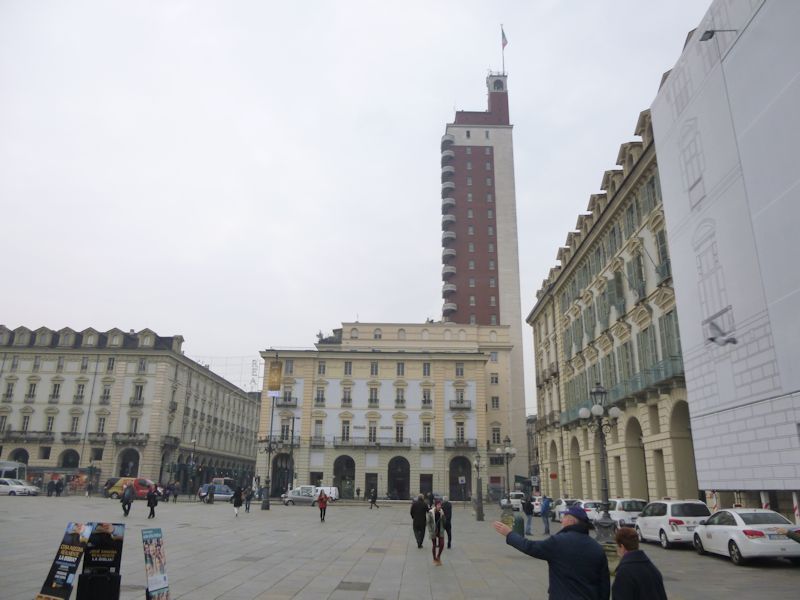
Don't look over that way. That somewhat incongruous non-Baroque looking building was built in 1934 to serve as the headquarters of the Fascist Party.

This is the Palazzo Madama, located conveniently next to the Mister Hot-Dog and only a block east of Master Sandwich. The site of Turin was occupied by a Ligurian Celtic people, the Taurini, and their city was besieged and taken by Hannibal in 218 BC on his way to his rendezvous with destiny in southern Italy. The Romans had a permanent military camp here in Augustan times, remains of which can still be seen. In medieval times the city was owned, in one way or another, by the Lombards, then by Charlemagne's Franks, by local prince-bishops as well as the Marquess of Montferrat, and finally by the Savoyards spilling over from their territories in the French Alps.
In 1562, Emmanuel "Iron Head" Philibert moved his capital of the Duchy of Savoy from its ancient home in Chambéry to Turin, where it remained the capital as the Duchy graduated to the Kingdom of Piedmont-Sardinia and then the Kingdom of Italy in 1861 (though the capital was moved to Florence in 1865 and then to Rome in 1870 after the Papal States had been smartly seen to).

The Palazzo was originally part of Roman city defenses, then in the 14th century a castle of a cadet branch of the Savoy dynasty of the Haute-Savoie. It owes its present aspect to Marie Jeanne Baptiste, Duchess of Savoy and mother of Victor Amadeus II of Savoy and later King of Sardinia, for whom she acted as regent from 1675 to 1684.

This is she: she had a nickname for herself, "Madama Reale" or "Madame Royale", and she's responsible for, amongst other things, the thorough remodelling of the Palazzo Madama as her private retirement home after her son asked her to leave politics alone please. The project was entrusted to the famous palace builder Juvarra. In addition to being mother of the King of Sardinia, she was a daughter of the Duke of Nemours and cousin of Louis XIV of France, and grandmother of kings of Spain and France. She was also Countess of Geneva.

The Royal Madam paced these halls until her death in 1724, a month shy of 80 years old.
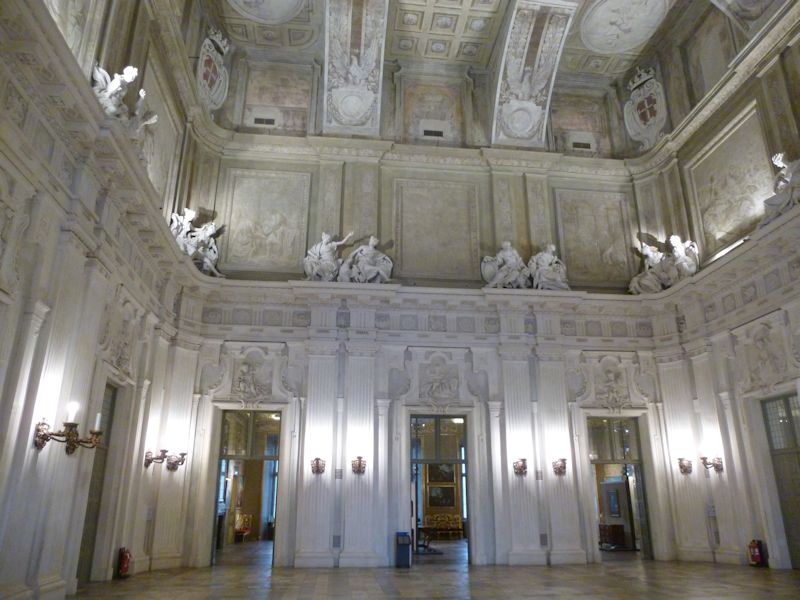
The Guard's Chamber, so-called, with stucco decorations from 1708-1715.
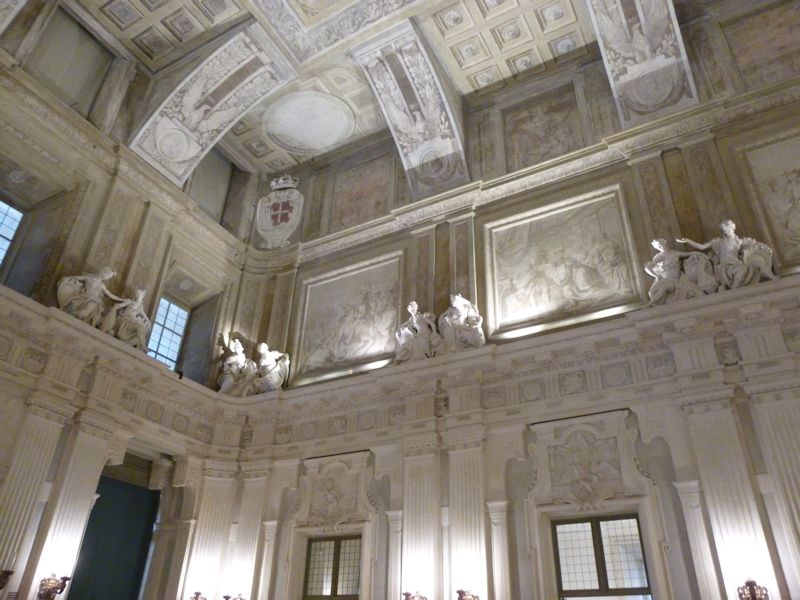
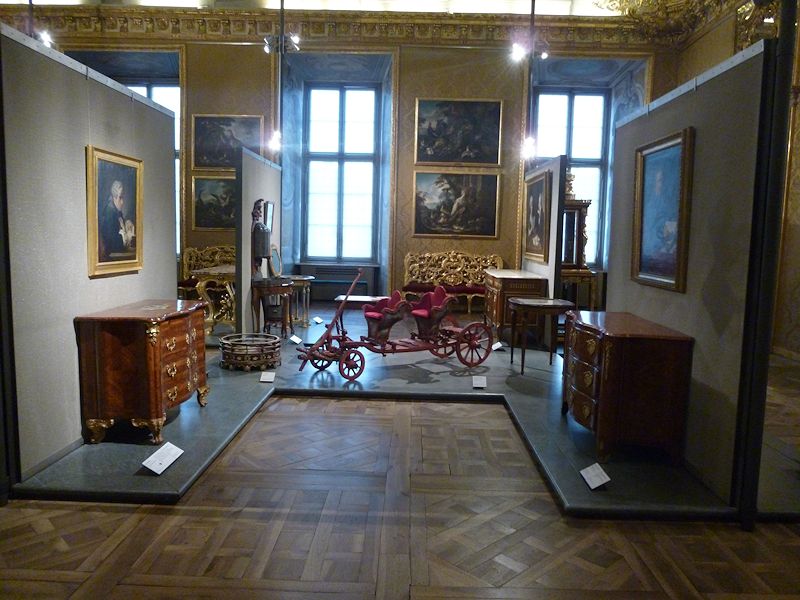
The former ballroom, now bursting with paintings and period artifacts

Like this trompe-l'oeil card table from 1758

Since 1934, the Palazzo has housed the Museo Civico d'Arte Antica ("City Museum of Ancient Art", but not really, that would be the Museo dell'Antichita down the street). Still . . .
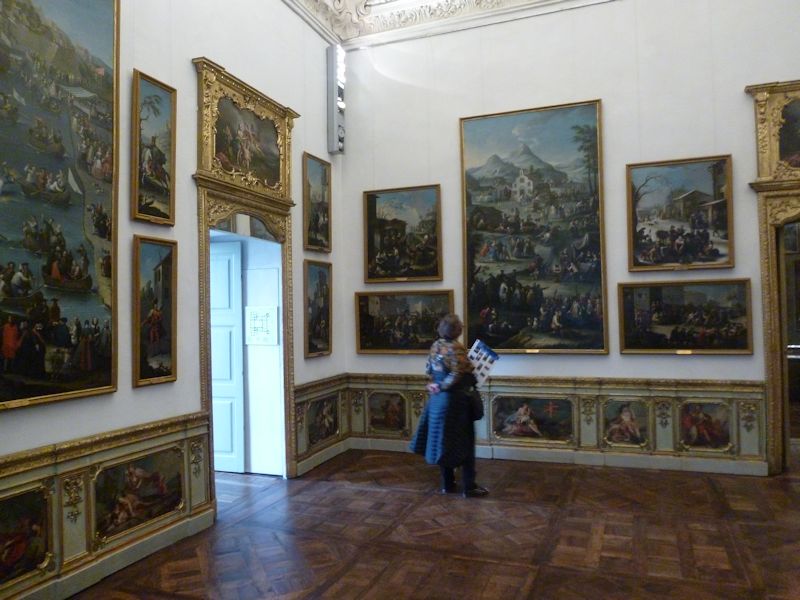

A fabulous Lamentations group in wood, from ca. 1480, by the Maestro di Santa Maria Maggiore (thought to be Domenico Merzagora from the Ossola valley)
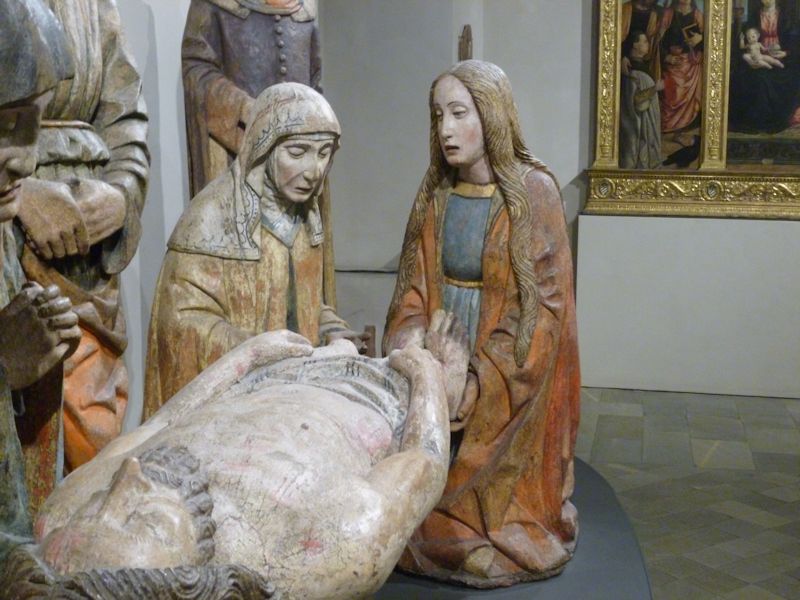
That's Mary Magdalene supporting the feet
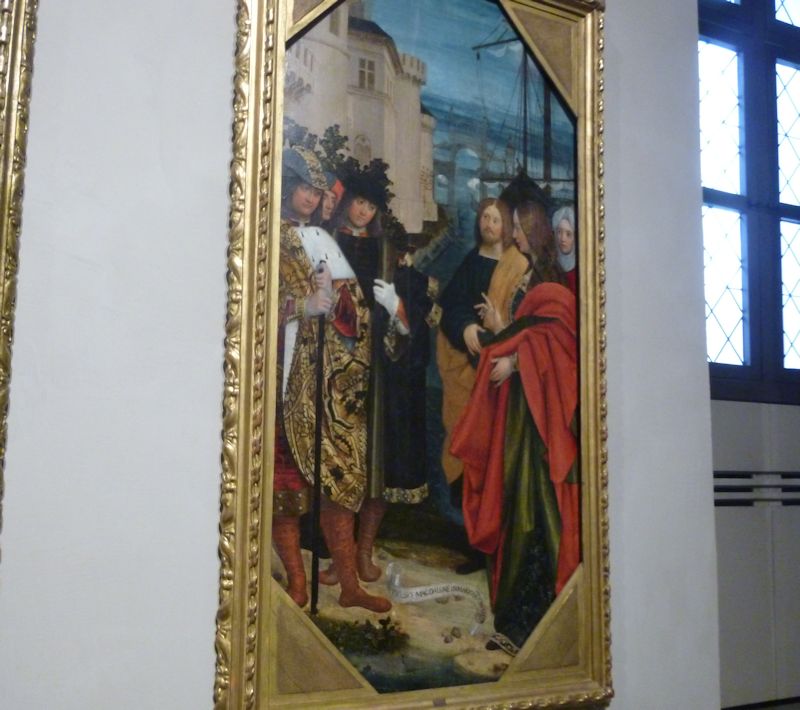
One collects Mary Magdalene images, who knows why? This one, by Defendente Ferrari in about 1505, shows the Magdalene disembarking in Marseilles, after which she converted the Provence region to Christianity and went off to live in a cave nearby. When she died thirty years later, the angels came and fetched her, but Benedictine and Dominican monks battled one another for years over her remains.

This is Mary Magdalene's whole life story in pine wood episodes (but missing the arrival in Marseilles), from about 1300.

A fine St Michael also by Defendente Ferrari

A very laid-back Baby Jesus, despite missing his shorts (Eusebio Ferrari, Madonna and baby with saints and two donors, 1519)
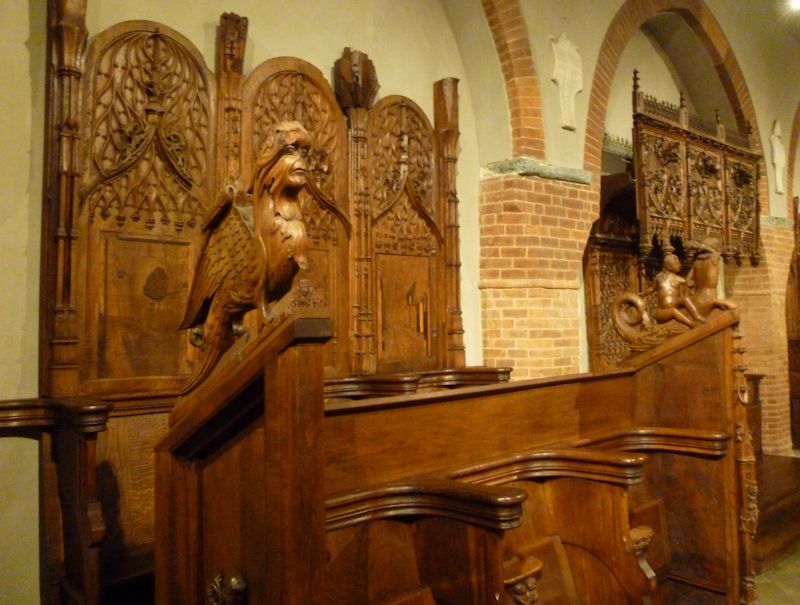
A collection of wonderful decorative choir stalls


It's hard to understand how they could have sat there through a long service without cracking up in hysterical giggling.

Leaving the Palazzo Madama
(Another visit to the Palazzo Madama, 2019)

Work on Madame's own Palazzo Madama was halted in 1721, with only the front tier completed -- behind it, the 15th century towers and castle block remain. Only the monumental grand staircase and rooms overlooking the Piazza are part of the Juvarra restructuring.
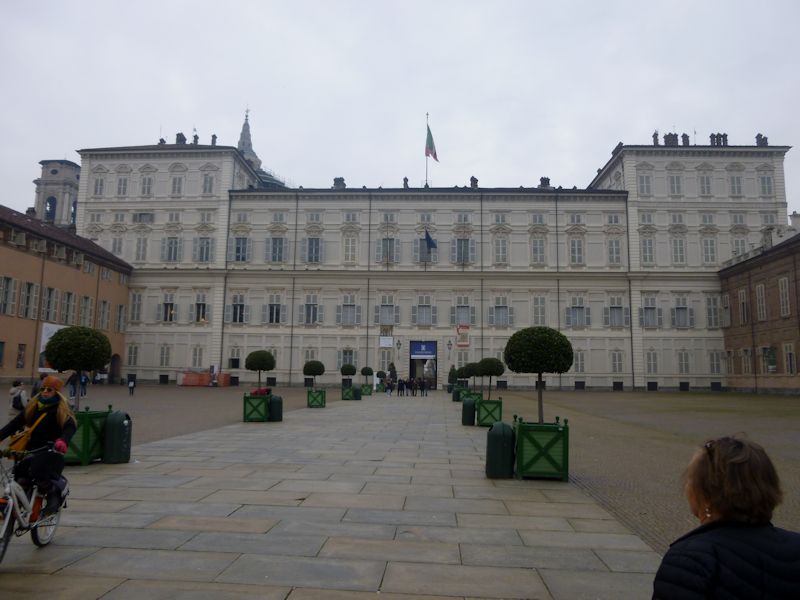
The Palazzo Reale or Royal Palace. The original building was the Bishop's Palace from the 16th century but was rebuilt beginning in 1645 by the Dowager Duchess of Savoy, Christine Marie of France, daughter of King Henri IV and Marie de' Medici, widow of Victor Amadeus I of Savoy, and Regent for her son the Duke Charles Emmanuel II.
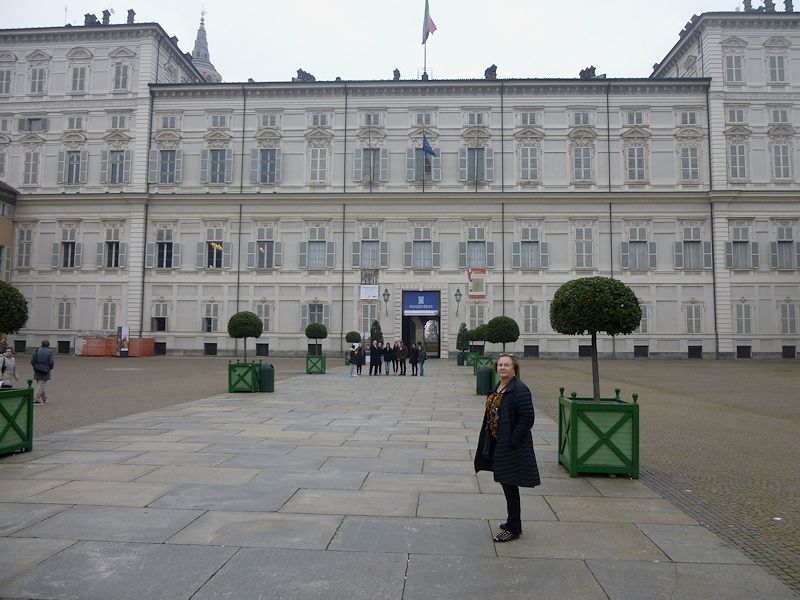
Part of the World Heritage Site "The Residences of the Royal House of Savoy", the Royal Palace saw major improvements in the 18th century, some of them also designed by Filippo Juvarra, and later by Benedetto Alfieri.

The present collection called the Polo Reale of Turin: we have the Palazzi Reale and Chiablese, the Sabauda Gallery (which is what we mostly came for but which is closed for very lengthy renovations (and reopening next week!)), the Archaelogical Museum, the Royal Gardens, Armory, and Library. The Cathedral of San Giovanni is also there in the centre, and the Palazzo Madama, formerly connected by corridors but no longer so and not part of the same ticket price, is adjacent off to the right. The idea of the renovation scheme was to create an interconnected "command area" around the Piazza Castello for administrative and defensive purposes.

A bit much, I would have thought. (The whole staircase thing is from 1865.)

The Hall of the Swiss Guard, always the main reception hall but recognizing the Swiss mercenary band that garrisoned the palace. On the rear wall behind us is a huge conventional painting of the 1557 Battle of San Quentin in northern France, commemorating the Spanish victory over the French that established Duke Emmanuel Philibert as one of the great generals of his age.
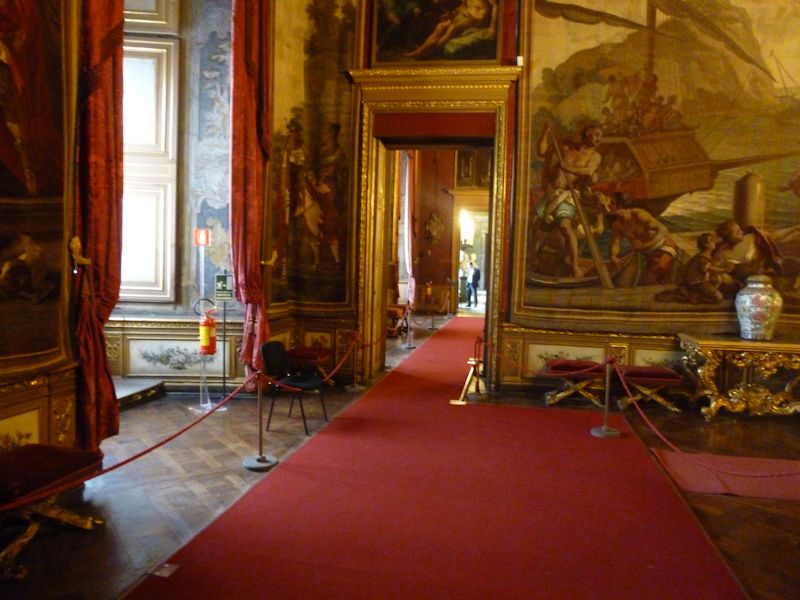
Impressive. But not comfy. Maybe mostly intended to impress the guests.

We were wandering the halls, pretty much overwhelmed by all this, and then found ourselves . . .

. . . fetched up in the Royal Armory, built up in the early 19th century by Charles Albert, King of Piedmont-Sardinia, and said to be one of the most important historical arms collection in the world -- now housed here in the Galleria Beaumont, a wing of the Palazzo Reale that was designed by Juvarra in 1733 and completed by Alfieri in about 1762.

Kristin can move very quickly through museums of arms and armor, and I'm sure to be the straggler again very soon.

It is actually a very interesting collection with all kinds of odds and ends, some very old (e.g., Greek helmets), some touched by celebrity history (like Emperor Charles V's pistol, Henri II's ceremonial shield from c.1558, Napoleon's something or other), and a lot of it direct from the Savoyard arsenals in Turin and Genoa over the years.

There goes Kristin; we'll try to hurry.

The collection of horses is also much commented upon.
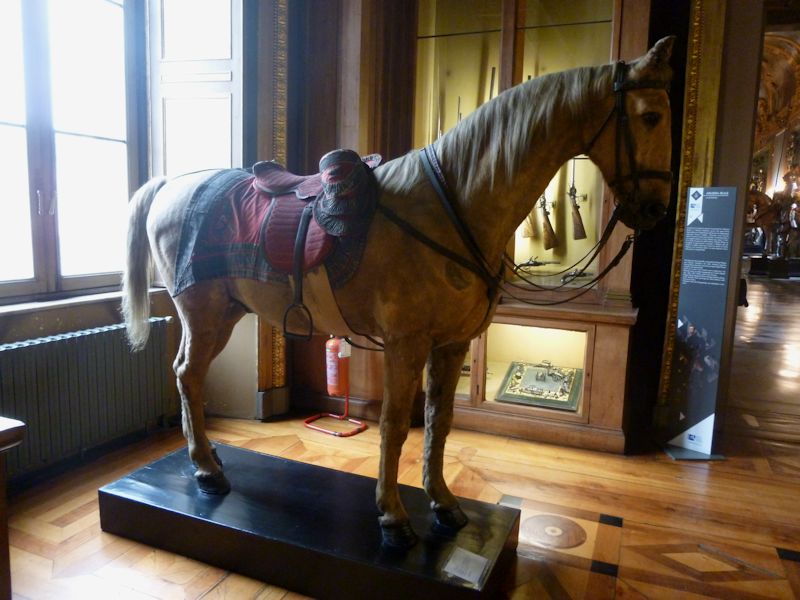
This for example looks very like a statue of King Charles Albert's own horse, "Favorito", which stood by him during his campaign against the Austrians in 1848-49. But it's not; it's Favorito himself.
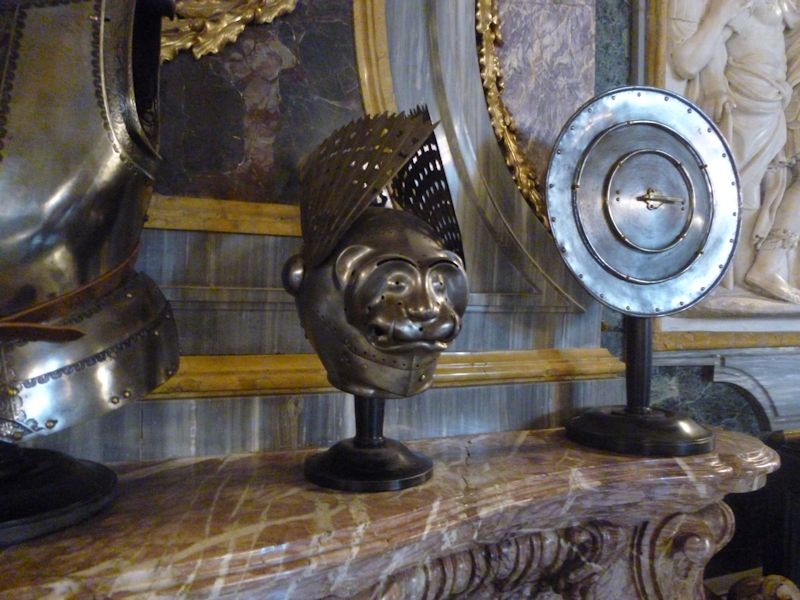
This is my favorite helmet in the whole collection.

It's time to catch up with Kristin. Racing down the halls.

I'm still the straggler.

If you were the Duke or King, where would you go just to relax and read the funny papers?

The dining room obviously, late 19th century in its present form; they must have had some rollicking wild times here, back in the day.

Called the Alcove, originally the bedchamber of Duke Charles Emmanuel II with French-themed decorations in honor of his new wife Françoise of Orléans (who unfortunately died at 15 in 1664).

The Medallion Room, enough to give you a headache just hurrying through it

The Ballroom, created in the 1830s at the order of King Charles Albert by knocking down the walls of smaller anterooms

The dance-themed frieze from 1840 is supposed to invoke decorations excavated in Pompeii and Herculaneum.

Chandelier-envy

Time to leave: back down the subdued and tasteful grand staircase

Past the Duke of Savoie Victor Amadeus I (1587-1637), husband of Dowager Duchess Christine Marie, riding roughshed over the slaves. ("The figures of the slaves are well executed, but the statue itself is contemptible." - Dr John Bell, 1825)

The Cathedral of San Giovanni, built in the 1490s next to the bell tower from 1470. The ancient Roman theatre was here, and then three Christian churches of the Lombards from the 6th century. It was dedicated as the seat of the Bishop in 1515.
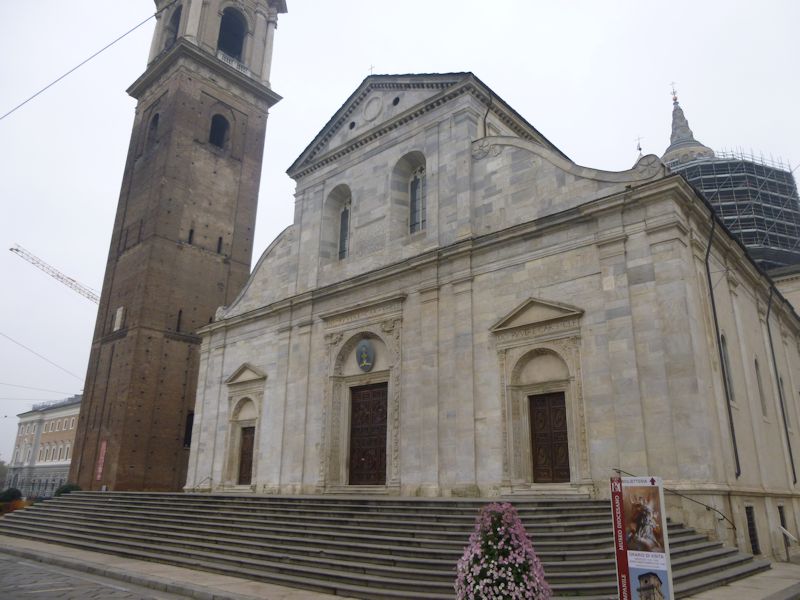
The Chapel of the Holy Shroud was added in here in 1649 to house the "controversial" Shroud of Turin ("controversial" in quotation marks because I thought that Joe Nickell had put paid to all that in 1998). We could have formed our own opinion on the "issue", if the cathedral had been open, which it wasn't. (Another bad day for a spiritual crisis.)

Roman remains under excavation, in front of the Galleria Sabauda, in a wing built onto the Palazzo Reale for the purpose in 1832 -- a fabulous collection, by all accounts, but presently being renovated. In fact, it's scheduled to reopen on 4 December 2014. Next week.

The Museo Archeologico

Very good presentations and didactic films of the early history of the region
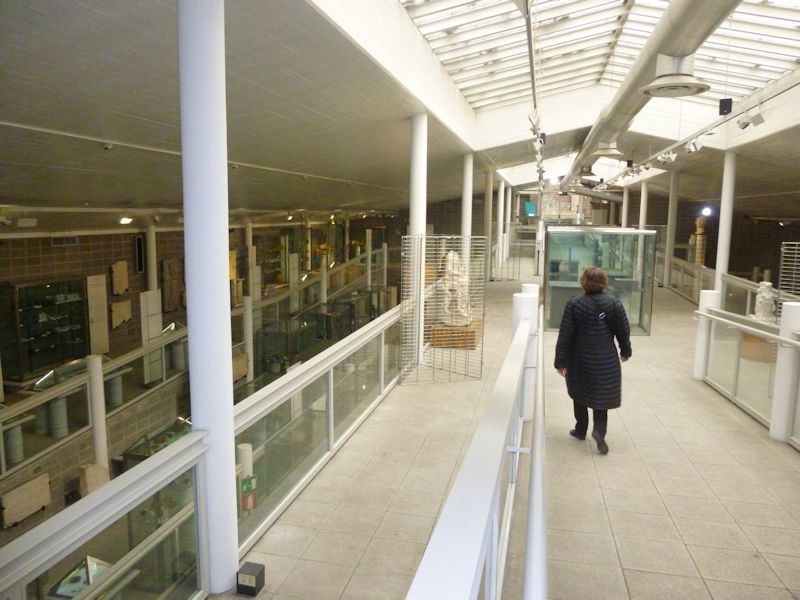
Some of it's a bit more like a warehouse of Old Stuff . . .
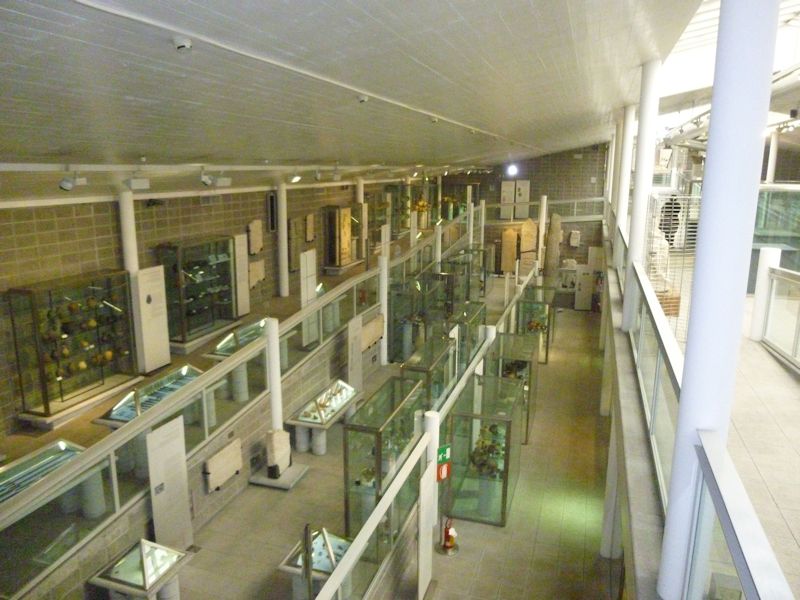
. . . which may be part of the point.

We're crossing the Piazza San Giovanni in front of the Cattedrale, looking for the southbound tram line.
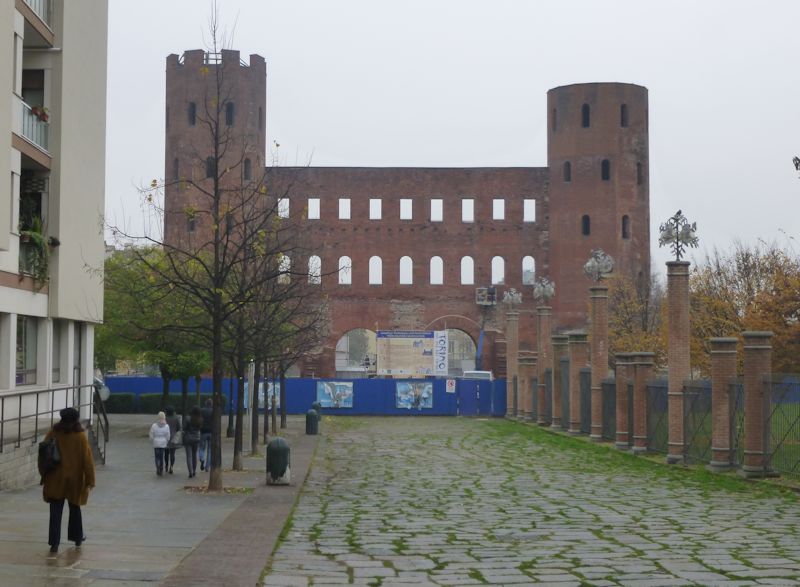
That's the Porta Palatina, the late 1st century BC northern gate to the Roman city of Julia Augusta Taurinorum, with the Roman road that led through it.

A covered market
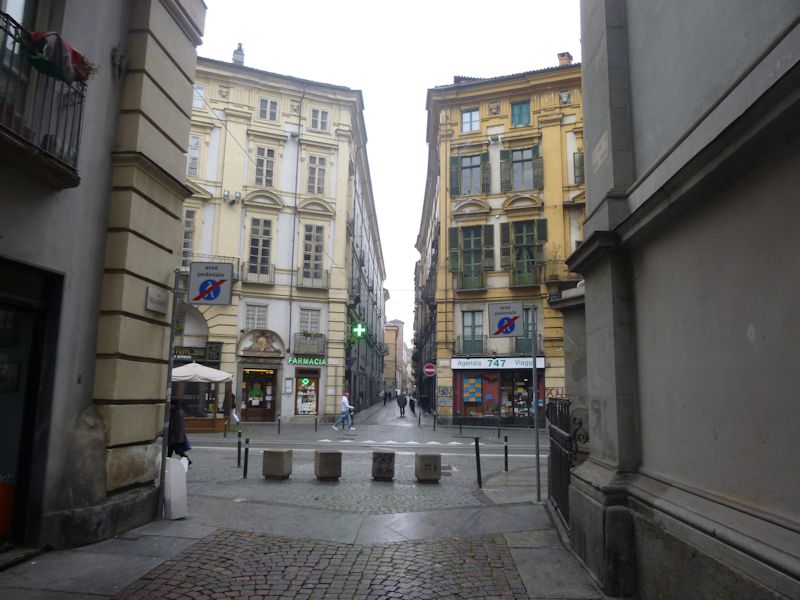
Turin street scenes

The Via Domenico, off the Via Milan

Here comes our tram. Any minute now.
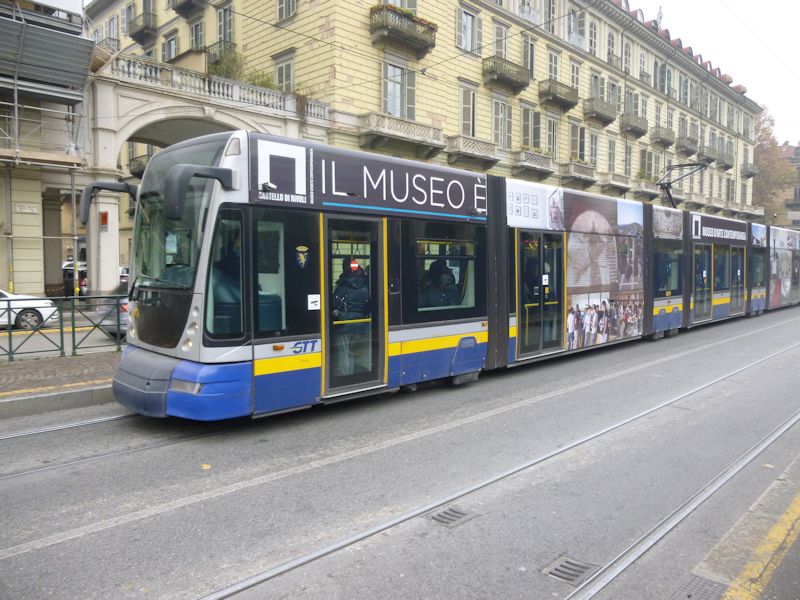
Right on time

We're back in Sillavengo now, time for dinner, and a not-too-early start tomorrow.

Hilltop castles on the road up the Valle d'Aosta on the way to the Grand Saint Bernard. It was a very fun trip.
       
     

 
 Feedback
and suggestions are welcome if positive, resented if negative, Feedback
and suggestions are welcome if positive, resented if negative,  .
All rights reserved, all wrongs avenged. Posted 19 January 2015, updated 4 May 2019. .
All rights reserved, all wrongs avenged. Posted 19 January 2015, updated 4 May 2019.
|
 Dwight Peck's personal website
Dwight Peck's personal website
















































































